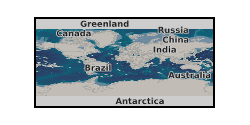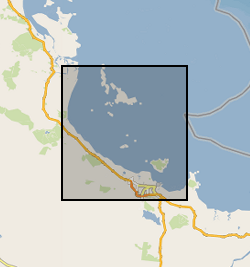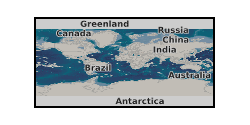University of Exeter
Type of resources
Topics
Keywords
Contact for the resource
Provided by
Years
Formats
Representation types
Update frequencies
Resolution
-
The dataset includes markers of oxidative state in banded mongooses at Queen Elizabeth National Park, Uganda, in the period 2017-2021. Data are: red blood cell concentrations of glutathione; blood plasma concentrations of malondialdehyde; blood plasma concentrations of protein carbonyls; red blood cell activity of total superoxide dismutase; and whole milk concentrations of malondialdehyde. Full details about this dataset can be found at https://doi.org/10.5285/481c424e-f277-4eb7-9ee0-cbdb5532ef79
-
This data is an ensemble of Joint UK Land Environment Simulator (JULES) simulations, ran for a select set of 1kmx1km grid cells in Great Britain, each with a different set of parameter values, from 2001 to 2010. The data includes simulated Gross Primary Productivity (GPP) for 5 different plant functional types on an 8-day average. (Broadleaf trees, Needleleaf trees, C3 grasses, Shrubs, and Cropland) as well as the weighted combined sum. These simulations were obtained to facilitate statistical emulation, which is why a wide range of grid cells and parameter values were used (both also provided in the data set). The work was funded by the Natural Environment Research Council through research grant NE/T004177/1 JULES EMulator of ecosystem services (JEM) Full details about this dataset can be found at https://doi.org/10.5285/789bea37-0450-4822-9857-3dc848feb937
-
The data provide information on a number of male cricket behaviours organized according to time and duration of the behaviour. Also included are the mean temperature at the ground level for the duration of each observation. Full details about this dataset can be found at https://doi.org/10.5285/f56d3d1c-28f2-4667-90b0-ef352243dd2a
-
The dataset contain insect numbers, plant biomass, successful attacks of parasitoids, and behavioural response of parasitoids. The data are based on direct observations of insects and plants in field and laboratory experiments testing for the impact of different intensities of artificial light at night on an experimental insect food web with control (no light), and white LED light with 0.1,1,5,10,20,50,100 lux. Data collection was done in a field site, and controlled temperature room at Penryn Campus of University of Exeter, Penryn, UK. The field experiment was set up on 29th July 2016 and ran for nine weeks, while the additional experiments were conducted between summer 2016 and spring 2018. The data have been sampled as part of the NERC project NE/N001672/1 "Effects of artificial light on multi-trophic population dynamics". Full details about this dataset can be found at https://doi.org/10.5285/d30168d3-6cbb-4d75-b73c-276e6083a1fe
-
We provide basic morphological and life history data (size, lifespan, emergence date) and behavioural data (number of matings, fights and burrow use) on a population of wild field crickets (Gryllus campestris) in a meadow in N. Spain, from May to June 2022. Crickets were individually tagged with a 2 letter code as they became adult so they could be recognised on the video recorded 24 hours a day using infra-red video cameras that monitored up to 140 burrows simultaneously. Video was watched manually by a single observer who recorded the traits listed above. Crickets were weighed using a 0.1mg accurate balance on the day of their emergence to adulthood. Their emergence was observed using the video cameras. Their lifespan was determined by observation of their being killed by a predator on the video camera, or because they disappeared from observation and were not seen subsequently. Matings, fights and burrows used were directly observed from the video. These data were acquired to assess behavioural thermoregulation in crickets in the wild and were collected by researchers at the University of Exeter. Full details about this dataset can be found at https://doi.org/10.5285/caddc526-9d70-4c06-9d9a-abb73836f609
-
We provide data on how the body temperature of field crickets Gryllus campestris rises and falls in relation to exposure to the sun and environmental factors include ground and air temperature, diffuse and shortwave radiation, and wind speed. Crickets were in a meadow in N. Spain from May to June 2017. Individual crickets were retained in a controlled area using a line attached to a copper ring glued to their thorax. Crickets were maintained in captivity and randomly selected every day to run the temperature increase trials. Trials were carried out in an area with mown grass. Before entering the trial, each individual was cooled to a temperature of 13ºC. During the cooling process, ambient temperature, humidity and reflected apparent temperature were measured using a thermal imagining camera (FLIR T4). Once the cricket reached the base temperature, it was released in the arena and its temperature measured at 1 minute intervals with the same camera, for a minimum of 20 minutes. These data were acquired to assess behavioural thermoregulation in crickets in the wild and were collected by researchers at the University of Exeter. Full details about this dataset can be found at https://doi.org/10.5285/a65dbd74-c5b4-4c33-a658-9941cac0a049
-
This is a dataset on mortality costs and reproductive success from intergroup conflict in banded mongooses, collected from a wild population of banded mongooses on the Mweya Peninsula, Queen Elizabeth National Park, Uganda between 2000-2019. We observed naturally occurring, aggressive interactions between social groups and recorded data on individual mortality occurring during and as a result of fighting. We used long term observations of reproductive events to determine individual reproductive success, measured as the total number of offspring assigned to each individual over the lifetime, and the number of offspring born to each individual from extra-group mating. We recorded data on oestrus events in social groups to determine when focal and rival groups were in oestrus simultaneously, and whether they were involved in an intergroup interaction with each other. These data were collected to examine the fitness costs and benefits of intergroup conflict. Full details about this dataset can be found at https://doi.org/10.5285/a1f3d7e5-934f-4b12-ba7c-c372ce9df2c6
-

Description of peatland sites included in the compilation of carbon accumulation rates, including resolution (high, low), interpolation (yes/no), contributor name, country, lon, lat, peatland type, dominant plant type, no. of dates used in the last millenium carbon accumulation rate calculation, and problems with the data. Peatland sites at northern hemisphere high and mid latitudes (260), tropical (30) and southern hemisphere high latitudes (7 sites).
-

This dataset comprises a record of benthic foraminifera count data from three cores that were analysed to assess down core changes in foraminifera abundance from the Paluma Shoals reef complex, Halifax Bay, central Great Barrier Reef, Australia; cores OPS-PC2, OPS-C-PC1 and OPS-D-PC1. The site/core names relate to the sites described in the following paper: Morgan KM, Perry CT, Smithers SG, Daniell JJ and Johnson JA (2016) Extensive reef development within the “mesophotic” nearshore Great Barrier Reef: Evidence for intra-regional variations in coral resilience. Scientific Reports 6:29616. DOI: 10.1038/srep29616.
-

This dataset comprises raw carbon, oxygen and hydrogen stable isotope data on water (precipitation and terrestrial) and plant cellulose from Empodisma-dominated peatlands throughout New Zealand. This data has been published in two open access papers: Amesbury, M. J., Charman, D. J., Newnham, R. M., Loader, N. J., Goodrich, J. P., Royles, J., Campbell, D. I., Roland, T. P. and Gallego-Sala, A. V. 2015. Carbon stable isotopes as a palaeoclimate proxy in vascular plant dominated peatlands. Geochimica et Cosmochimica Acta 164, 161-174. Amesbury, M. J., Charman, D. J., Newnham, R. M., Loader, N. J., Goodrich, J. P., Royles, J., Campbell, D. I., Keller, E. D., Baisden, W. T., Roland, T. P. and Gallego-Sala, A. V. 2015. Can oxygen stable isotopes be used to track precipitation moisture source in vascular plant dominated peatlands? Earth and Planetary Science Letters 430, 149-159.
 NERC Data Catalogue Service
NERC Data Catalogue Service